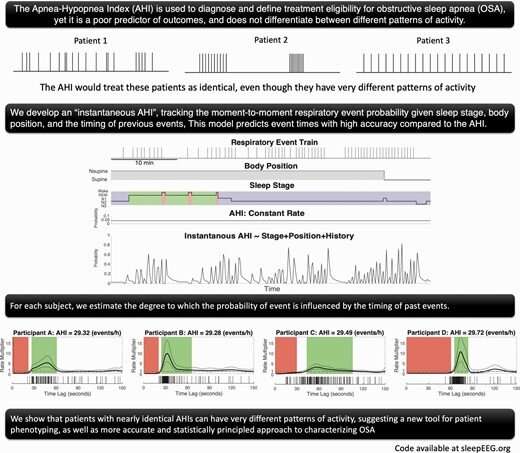Individual patterns in sleep apnea provide a better approach to diagnosis and treatment

One in ten Americans suffers from obstructive sleep apnea (OSA), where breathing is repeatedly disrupted during sleep. OSA has been linked to increased risk of cardiac issues, dementia, and many other health problems.
While sleep apnea is a complex process, constantly changing with many factors during the night, doctors diagnose and categorize sleep apnea patients with a single number—the apnea-hypopnea index (AHI), which is the average apnea event rate across the night. Consequently, the AHI has been shown to be a poor predictor of health outcomes, as it ignores the timing and patterns of events.
To improve patient care, a team of researchers from Brigham and Women's Hospital, a founding member of the Mass General Brigham health care system, and Boston University have pioneered an "instantaneous AHI," which evolves moment-to-moment based on data from sleep stage and body position and patterns of past apnea activity. Their improved model allowed researchers to accurately predict when events will occur, which could help sleep clinicians develop individualized treatments for their sleep apnea patients.
"The AHI has prevented us from seeing major differences between patients who are currently seen as clinically identical," said corresponding author Michael Prerau, Ph.D., of the Brigham Division of Sleep and Circadian Disorders. "By using this new approach, we see that people with the exact same AHI have very different patterns of activity, which can help us to develop better, more individualized treatments for sleep apnea."
The research appears in the journal Sleep.
More information: Shuqiang Chen et al, Dynamic models of obstructive sleep apnea provide robust prediction of respiratory event timing and a statistical framework for phenotype exploration, Sleep (2022). DOI: 10.1093/sleep/zsac189



















